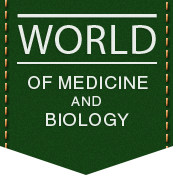| About the author: |
A. А. Dashchuk, A. M. Dashchuk, L. V. Fomina, Ye. I. Dobrzhanska |
| Heading |
CLINICAL MEDICINE |
| Type of article |
Scentific article |
| Annotation |
The widespread, long-term chronic course of the disease, the complex nature of the disorders and insufficiently studied pathogenesis determine the interest in the problem of eczema. The purpose of this study was to study the features of changes in the content of peripheral blood interleukins depending on the clinical course, severity and duration of eczema to determine the role of the identified disorders in the development of the inflammatory process. In 40 patients with true and microbial eczema, anamnestic and clinical features, the nature of the disease, as well as the use of highly sensitive ELISA determined the features of cytokine status depending on the selected parameters. These features of cytokine imbalance, which depend on the clinical manifestations of dermatosis, suggest their role in the development of exudative-destructive process in eczema. The concentration of IL-2 in both groups decreased, and IL-4 increased, more pronounced in the 2nd group. The revealed disorders in microbial and true eczema of the level of pro- and anti-inflammatory IL, and the correlation of interleukin parameters have pathogenetic significance and determine the features of the clinical course of this disease. |
| Tags |
true eczema,microbial eczema,immune system,cytokines,pathogenesis of eczema |
| Bibliography |
- Ariëns LFM, van der Schaft J, Bakker DS, Balak D, Romeijn MLE, Kouwenhoven T et al. Dupilumab is very effective in a large cohort of difficult‐to‐treat adult atopic dermatitis patients: first clinical and biomarker results from the BioDay registry. Allergy. 2019;75(1) :116–126. doi: 10.1111/all.14080.
- Bakker DS, Ariens LFM, Giovannone B, Hijnen DJ, Delemarre EM, Knol E, et al. EASI p-EASI: Predicting disease severity in atopic dermatitis patients treated with Dupilumab using a combination of serum biomarkers. Allergy. 2020; 75 :3287–3289. doi: 10.1111/all.14492.
- Bieber T. Interleukin-13: Targeting an underestimated cytokine in atopic dermatitis. Allergy. 2020; 75 :54–62. doi: 10.1111/all.13954.
- Bodoor K, Al-Qarqaz F, Heis LA, Mahmoud AA, Ashraf OO, Rowida A, et al. IL-33/13 Axis and IL-4/31 Axis Play Distinct Roles in Inflammatory Process and Itch in Psoriasis and Atopic Dermatitis. Clin Cosmet Investig Dermatol. 2020; 13: 419–424. doi: 10.2147/CCID.S257647.
- Ilenko NM, Nikolishyna EV, Lytovchenko IYu, Fardin A. Complex therapy of atopic cheilitis. Wiadomosci Lekarskie. 2021; LXXIV(2) :310–312.
- Kryuchko TO, Golovanova OY, Tkachenko IA. Prevalence of risk factors of allergic diseases among children aged 8-9 years in Poltava region (the results of the first stage of the research). Wiadomosci Lekarskie. 2018; LXXI(3) :699–704.
- Kader HA, Azeem M, Jwayed SA, Al-Shehhi A, Tabassum A, Ayoub MA, et al . Current Insights into Immunology and Novel Therapeutics of Atopic Dermatitis. Cells. 2021; 10(6):1392. doi: 10.3390/cells10061392.
- Langan SM, Irvine AD, Weidinger S. Atopic dermatitis. Lancet. 2020; 396 :345–360. doi: 10.1016/S0140-6736(20)31286-1.
- May RD, Fung M. Strategies targeting the IL-4/IL-13 axes in disease. Cytokine. 2015; 75(1) :89–116. doi: 10.1016/j.cyto.2015.05.018.
- Pavel AB, Zhou L, Diaz A, Ungar B, Dan J, He H. The proteomic skin profile of moderate-to-severe atopic dermatitis patients shows an inflammatory signature. J Am Acad Dermatol. 2020; 82(3) :690–699. doi: 10.1016/j.jaad.2019.10.039.
- Seth D, Cheldize K, Brown D, Freeman EE. Global Burden of Skin Disease: Inequities and Innovations. Curr. Dermatol. Rep. 2017; 6 :204–210. doi: 10.1007/s13671-017-0192-7.
- Stander S. Atopic dermatitis. N. Engl. J. Med. 2021;384 :1136–1143. doi: 10.1056/NEJMra2023911.
|
| Publication of the article |
«World of Medicine and Biology» №3(89), 2024 year, 048-051 pages, index UDK 616.521-036.1-092-078:612.017 |
| DOI |
10.26724/2079-8334-2024-3-89-48-51 |
